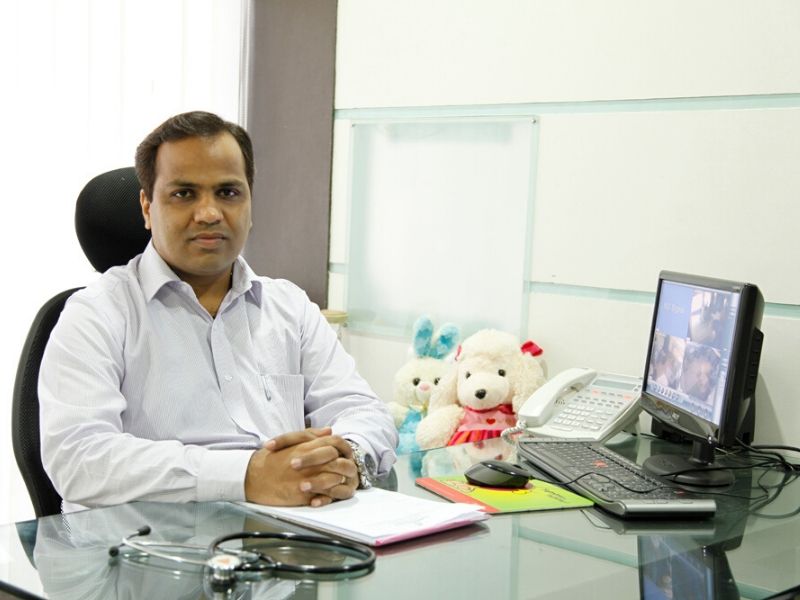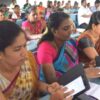Post lockdown safety recommendations for schools
 – Dr. Atish Laddad, Founder & Director at Docterz
– Dr. Atish Laddad, Founder & Director at Docterz
Children tend to spend most of their time in schools and other childcare settings.
Schools and educational institutes tend to establish an exclusive setting to facilitate children and adolescents in developing an optimistic outlook on life and aid them in establishing a healthy lifestyle. Yet the worldwide rates of morbidity estimates in children and juveniles recommend that school-aged kids have noteworthy requirements for health upgrade, prevention for ailments and a need to acquire appropriate health care services even while at school.
It is essential to note that due to their developing immune systems, children are particularly susceptible to falling trap to infections and contagions like cold, flu and cough while being in the school premises and have great odds of spreading these diseases rapidly to other students due to their faulty hygiene practises and most importantly the school’s dense population. Hence for most students, appropriate and first-rate school health services within the premises are the foremost and the most reachable point of contact during a time of emergency during school hours. Taking these prime aspects into consideration schools and other educational institutions along with focussing on offering excellence in academics must also emphasize on offering the best healthcare services with a sole aim to offer school-age children with preventive, healing and supportive medical interventions.
The factor of contributing to every child’s well-being while at school is of prime importance. Hence in current times the school-based providers and authorities are inclined towards offering a superior and diverse range of child healthcare services to students. These appropriate preventive steps are designed to draw a safety net around the students, thus guarding them from falling trap to unwanted infections and ailments:
Incorporating a holistic medical programme: This is an important step that schools need to undertake in this direction. These constructive medical programs encourage schools to promote child healthcare within their premises, thus ensuring that the physical, mental, emotional and psychological health of a child is thoroughly taken care of. Having a medically-equipped casualty room within the school premises will facilitate in efficiently handling a broad range of medical maladies, like unexplained aches and pains to injuries and life-threatening conditions like cardiac arrests and burns and most importantly will help in early detection of ailments. To oversee emergency cases, skilled pediatricians must pay visits to the school and they must have on-board a 24/7 helpline number in case of emergencies. These remedial platforms have to be designed in a way to arm schools, parents and teachers to offer optimum healthcare to students, thus helping to recover the child’s health within the school premises.
Annual physical and mental health screening: School physicians have a very integral role to play in safeguarding the child’s mental and physical well-being. This can be achieved by routinely or annually conducting adequate physical and cerebral health screening for school students. Considering the importance of upholding good physical health of the child to avert being infected, schools must undertake timely physical screening of students which should encompass aspects like scoliosis evaluations, blood pressure readings, checking blood sugar levels, pulse rate, measurement of height and weight, testing for tuberculosis and even physical exams pertaining to full body check-ups may be conducted. Considering the co-relation between Vitamin D deficiency and the weakening of the immune system, schools must have onboard skilled health examiners to provide appropriate treatments to children who lack the same. Post lockdown once the schools reopen, it is all the more integral for schools to control various extracellular pathogens from affecting student’s health. Post lockdown operations like mass testing and screening of the child’s health status must be a part of the school’s defensive strategies. They must keep a track of high-risk students like those suffering from diabetes or heart ailments.
Along with prioritizing the physical health of students, equal importance needs to be placed on mental health too. Cognitive health examination has an important role to play in condensing barriers to learning, lessens bouts of anxiety in school-going kids, detects any prevalence of mental health symptoms in the initial stages, provides accurate diagnosis and helps to bring out an optimistic educational and behavioural outcome in students. Engaging in efforts to deliver mental health screenings in schools is an enormously vital preliminary step in the battle against emotional illness, and will result in the capability to recover the mental health care of students.
Schools must adapt the practice of screening with infra-red thermometers at the school entrance. Defibrillator machines ideally should be there in every school and the school health data should be analysed and ways and measures need to be incorporated to improve it.
Emphasis on getting pediatricians inside school campuses post the epidemic: Once the schools reopen post the pandemic, the school authorities should take all the necessary precautionary measures like getting on board a skilled pediatrician within the premises to perform an effective screening of all students and educators post resuming and must gauge the overall health of the school. In case any child falls ill even after the school reopens, they must be given treatment on priority to rule out any possibility of infections from spreading. The child healthcare provider must co-ordinate with parents of sick children and must guide them on what healthcare measures and medications they must follow while the child is at home. Once schools reopen, they can also conduct a workshop on the dangers associated with a pandemic where-in the pediatrician can address students about the risks and preventive measures. They can also provide CPR training to higher standard students.
Also read: EW webinar on “School Management in the Post-Covid Era”
Practicing social distancing in schools post reopening: Physical distancing and other safeguards against transmission of viruses should remain in place for an extensive time period at schools even after stay-at-home orders are lifted. Even after the schools reopen there is a high peril of students falling prey to infections post coming in contact with infected students. Hence to avoid this, schools must focus on condensing mass crowding even after the schools start. This can be done by minimizing the number of students attending school. The schools should incorporate a protocol by which only about a minimal percentage of pupils that is about 15 students can attend classes while others can undertake online classes via virtual media. This can be done on a rotational basis. Steps to reduce physical contact in schools among students who function in proximity include, reducing prayer meetings, mealtime, and recess, also kids must be allotted separate tables while they sit in class without letting them share tables. Once the kids go back home the entire school premises must be properly sanitized and disinfected. Students and teachers must be checked randomly every week to guard against the return of any virus.
Prioritizing hand hygiene in schools: The bearing of faulty hand hygiene habits is associated with augmented incidences of illness and school absences. As an answer to this, schools must undertake a comprehensive hand hygiene program right from the elementary level to high schools to reduce the spread of microorganisms and germs. These effective programs will help to strategize and broadcasting proper handwashing techniques, thus reinforcing proper personal hygiene. Even once the schools start functioning, they should undertake awareness programs on hand-washing, workshops to alleviate misconceptions about infections and viruses and must encompass, the right protocols for food hygiene and sanitation and to manage children with fever in the current context.
Regular cleanliness through hygiene programs in schools: School sanitization and hygiene education are vital in safeguarding against infectious ailments. Hence as a part of the school’s hygiene drive, the educational institutions must undertake steady cleanliness and hygiene programs in school premises to facilitate schools in implementing strategies to endorse sanitation in schools. Considering the fact that chances of contracting infections are high during monsoons, the school must be equipped with an appropriate tool kit to curb monsoon illness. Rainy seasons are said to record a steady rise in body temperature, gastro problems and a surge in the number of dengue and malaria cases. Have an effective sanitization program within the school premises ensures an improved behaviour through expedient practices connected to personal, water, food and public hygiene.
Apart from these above-mentioned measures, the schools should have on-board skilled nurses and physicians for the purpose of screening and examination of students even in times of emergencies. Schools are a potpourri of infections as many children are working in closed spaces for long hours. Hence schools need to understand the importance of managing and controlling infections. The understandable significance of attention to the student’s health and the comparative ease of access to the child during school hours is undoubtedly a noteworthy factor in the formation of school healthcare services.
Dr. Atish Laddad, is a well known pediatrician and founder & director at Docterz
The views, thoughts, and opinions expressed in the article belong solely to the author, and not necessarily reflect the views, thoughts, and opinions of EducationWorld.
















Add comment